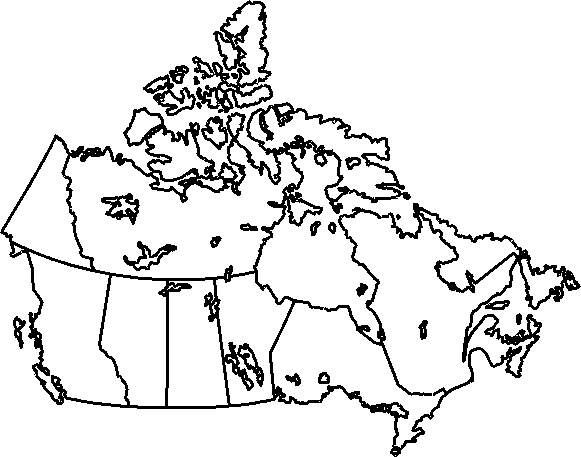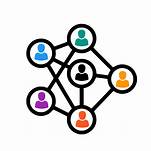My Experiences in Digitalisation

I grew up in Ontario, Canada. My experiences with digitalisation began when I was in kindergarten and was introduced to a computer in school. Back then, the mouse was a big black scrolling ball and the computer had very few programs. By the time I was in fourth grade I was designing and editing pages for our school yearbook using Microsoft Word. We bought our first home computer in 1999 with dial-up internet. It was then when I first began communicating with my cousins over-seas in Finland through email. I remember in 4th grade sitting on the school bus beside a girl in 8th grade who was writing her assignments in cursive with a black pen to be handed in to the teacher. By the time I was in middle school, all the writing assignments were typed on the computer and printed to be handed in to the teacher. In High School I got my first Nokia mobile flip phone with a colour screen and camera. When I graduated High School, I bought my first touch screen phone with no internet access. My first laptop I bought the year before I started nursing school at JAMK. At JAMK we were one of the first years of students to do some of our studies fully online. By the time I was in clinical practise the health care system was almost fully adapted to the digital patient health record system. When I started my first job as a nurse no more prescriptions were allowed to be written in paper, all had to be done digitally and the digital link between pharmacies and the health care system were established. My first nursing job was at a relatively remote health care center in Konnevesi, central Finland. One day we had a retired doctor come to do the rounds and he did not know how to document or make prescriptions on the computer. This became quite a problem and one of our nurses had to spend her entire day guiding the doctor how to use the digital health care system.
A few years later, I got the opportunity to work at the pulmonary out-patient clinic at the central hospital in Jyväskylä. There I began training and worked as a sleep apnea nurse. The use of ResMed CPAP machines with wireless network technology had just begun the year before. The interphase on the machines was very easy to use and gave us many tools to work with to make the CPAP therapy as comfortable as possible for the patient. When introducing the machine to the patient we asked the patient for consent to connect the machine to the wireless network. The CPAP device had a built in SIM-card and worked on a 3G wireless network. This technological advancement saved a large amount of time and resources. We were now able to monitor the use of the machine remotely instead of having the patients visit us in person every 3 weeks for the first 3 months of CPAP therapy. We now had access to data on the hours of use, mask leakage, therapy pressure, apneas, and more. We were able to manage settings remotely; such as pressure settings and humidity settings. We were able to troubleshoot problems that the patient was experiencing and adjust settings accordingly, all during a 15-minute phone call. We are very fortunate in Finland to have this type of technology available to us. This technology was designed and developed by a North American company, but even most CPAP users in North America do not have access to this technology because of a lack of cellular network infrastructure and resources.

However, even with this technology, there were still many tasks that could have been easily streamlined with the use of simple technology. A large amount of time was spent searching our patient lists to pull out those who were due for a check-up, scheduling them in for an appointment, printing out the invitation letter and mailing it. The software used to gather the information from the CPAP machines was not connected to the patient health data system and we needed to transfer the information manually into two other systems. There are still many tasks in health care that can be streamlined to save time and resources to reduce wait times and improve the overall quality of services.
In the future I see my former job as a sleep apnea nurse to be streamlined with time and resource saving technology. The patient data system will automatically retrieve information from the equipment we use and record it directly to where we need it. The system will automatically prepare a list of patients to be invited for an appointment. If this time is not convenient for the patient, they are able to reschedule the appointment online. We will have a more mobile style of working. When we won’t need to use the patient consultation room for time spent doing phone calls and documentation, we have a space saving common office for that. We will schedule use of patient consultation rooms according to our needs and our equipment will be automatically ready for us when we arrive. Lengthy documentation can be done using voice commands and written with voice interpreting software. The time saved will allow us to serve more customers and improve their experience.
The Risks of an Open Digital Society

An open digital society is very advantageous to businesses but causes drawbacks to individuals. The majority of people in today’s society have no idea about the extent to which information is collected and where it is utilised. Before the GDPR, a company could freely access and use your personal information to the purposes they wished without your explicit consent. It is your responsibility who you give your information to. Yet, it is required to give your name, email address and sometimes phone number and address to access almost every service available. Furthermore, your time spent using the service and what you purchased or did there was recorded without you knowing it. Most people, myself included, are so naïve about the sharing of their personal information that they hand it out freely not thinking anyone could be so interested in our lives that the information would be at any real risk. What is rarely thought about is how this information can be used to increase profits and optimise advertisements. I have even heard a story recently how a friend of mine guessed that her friend was about to get engaged when her social media suddenly started to advertise diamond rings and jewellery based on the fact that she frequently communicated with this friend on social media. There was even a description attached to the ad that stated something along the lines of: ‘this ad was suggested to you because of current interaction with’ her friend’s account. Maybe it’s time to start using the privacy options which inconveniently pop-up every time you open a website, especially if you are planning a big event in your life. These pop-ups are an effect of the GDPR regulations that were mandated in 2016 and implemented by 2018. If you take a closer look at the options you will see that you have the possibility to opt out of any ‘cookies’ or data gathered about your visit at the website. They often have multiple options if you care to only give partial rights to the data. This really gives each individual the freedom and rights to choose where their information is used. However, not all services are so straightforward. In order to use some services or devices you must agree to the terms and conditions, if you don’t agree you have the option of not using the device or service. In these cases, they are able to collect your data with your consent but must upon request have a way of telling you where your information is used and give the opportunity to retract your information.
All of this is due to the European Charter of Fundamental Rights which states that everyone in the EU has the right to:
- the protection of personal data concerning him or her
- access to data which has been collected concerning him or her, and the right to have it rectified
When considering the privacy of personal information in relation to health care, privacy and movement of information has already been a high priority for quite some time. With the implementation of the GDPR, the handling of personal information became even more evident in the daily work of a health care professional. Every piece of paper that has any identifiable information about a patient must be either locked up or properly discarded immediately after use. Even when discarding IV drip bags or medicine bottles all identifiable patient information must be covered up or destroyed in some manner. The transfer of medical records is highly regulated and the rights to the access of information can be updated by the individual electronically. Patients have the right to access to all their information, as well as who has accessed it and when.
Self-Evaluation
This assignment has really opened my eyes to the possibilities and downfalls of technology in the future. There has indeed begun a new technological revolution as Marco Annunziata called it the ‘industrial internet’ which will bring intelligent machines and analytics to enhance our capabilities as humans. I also learned about the challenges to the privacy of information and how easily the everyday objects we use can be remotely hijacked and manipulated. All this made me realise how important the protection privacy of my personal information is. The collection of big data will improve and change our lives, but we must do something in order to make sure that we don’t lose our privacy as a trade-off. It is the responsibility of each one of us to make educated decisions and change habits to protect the safety and future of the internet. Going forward, I will continue to educate myself and take care to implement privacy and internet etiquette.
Blogs I have commented on:
